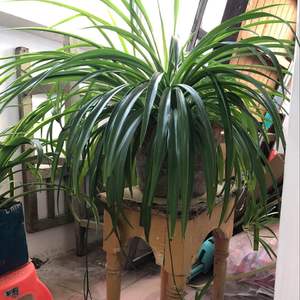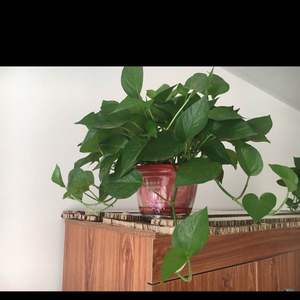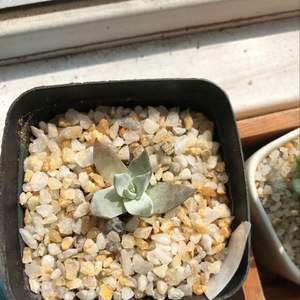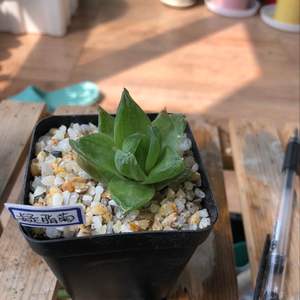文章
Miss Chen
2018年08月03日

Description: This annual or biennial plant is usually 1½–3' high, branching occasionally. The stems are variously colored, ranging from green to reddish brown. The lower stems can be quite hairy, while the upper stems are nearly hairless. The alternate leaves are up to 8" long and 2" across, becoming smaller as they ascend the stems. They are lanceolate, elliptic, or oblanceolate in overall shape, and either pinnatifid or dentate; the upper leaves have margins that are more smooth (entire). Each leaf narrows gradually to a petiole-like base, where it is either sessile or clasps the stem. There are usually conspicuous hairs along the central vein of the lower leaf surface.
The upper stems terminate in long inflorescences that are either spike-like, or they are open branching panicles. Widely spaced along the flowering stalks, there are sessile or nearly sessile flowerheads and short triangular bracts. These flowerheads are about 1-1½" across and they have 10-20 ray florets. The petaloid rays of these florets are light blue, fading to white; there are 5 tiny teeth at the tip of each petaloid ray. Toward the center of each flowerhead, there are several light blue stamens with blue anthers. The flowerheads bloom during the morning, and close-up later in the day, unless the skies are cloudy. The blooming period can occur from early summer to early fall, depending on the weather and the timing of disturbances (such as occasional mowing). The achenes are oblongoid and 5-ribbed; there is a pair of small scales at the apex of each achene. The root system consists of a stout taproot. Common Chicory spreads by reseeding itself.
Cultivation: Common Chicory appears to prefer full sun and a heavy soil that contains clay or gravel. This plant is typically found in locations that are mesic to dry, and it withstands drought rather well. Road salt and alkaline conditions are tolerated better than most plants. The foliage can appear rather battered-looking by the end of a hot dry summer.

Range & Habitat: The non-native Common Chicory has been reported in nearly all areas of Illinois, except a few counties in the NW and SE sections of the state (see Distribution Map). It is quite possible that Common Chicory occurs in those counties as well. This plant originated from Eurasia, and was present in Illinois by the late 19th century. It has been spreading steadily ever since and has become common, particularly in disturbed open areas. Typical habitats include pastures, abandoned fields, areas along roadsides and railroads, grassy areas that are not mowed regularly, undeveloped real estate lots, and other waste areas. Occasionally, Common Chicory colonizes disturbed areas of natural habitats (e.g., early stages of a prairie restoration), but it is not a serious invader of such natural areas in the long run.
Faunal Associations: The flowers attract short-tongued bees and probably other insects. Both nectar and pollen are available as floral rewards. The foliage of Common Chicory is eaten by Melanoplus bivittatus (Two-Striped Grasshopper), Melanoplus femurrubrum (Red-Legged Grasshopper), and probably other grasshoppers. The larvae of a lizard beetle, Acropteroxys gracilis, bore through the stems of this plant, while the caterpillars of the moth, Pyrrhia exprimens (Purple-Lined Sallow), feed on the the flowers, buds, and developing achenes. Because the foliage contains a bitter white latex, it is probably not preferred as a food source by mammalian herbivores, although cattle and sheep reportedly eat the basal leaves.
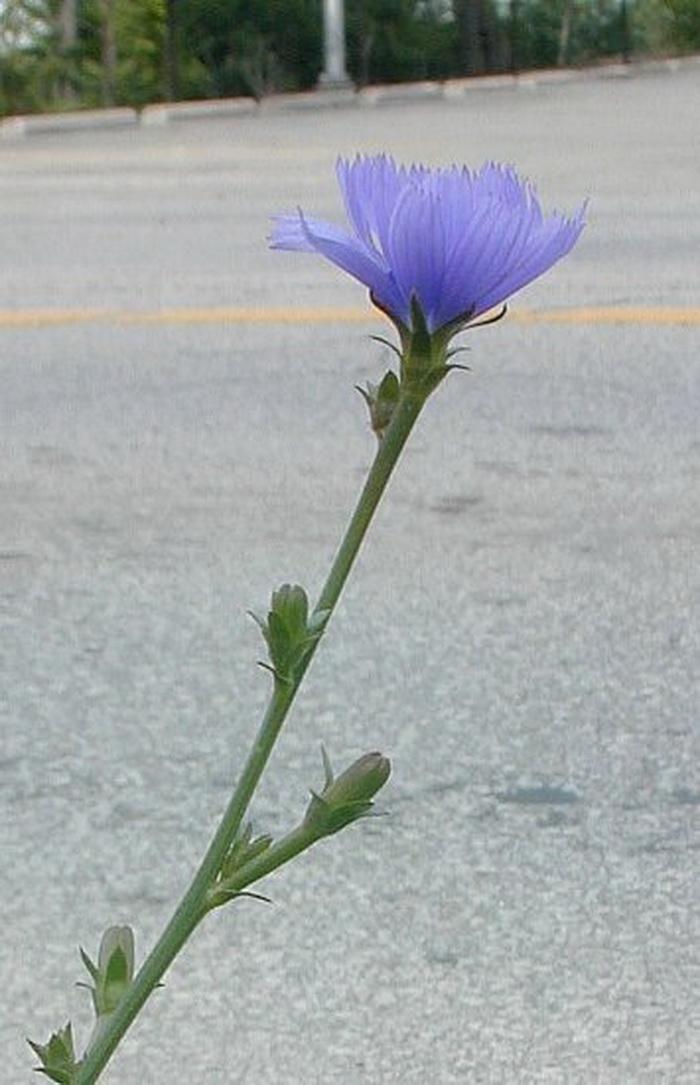
Photographic Location: Along a roadside in Urbana, Illinois.
Comments: The roots of Common Chicory have been roasted to create a coffee-substitute; they are also used as an ingredient in some herbal teas. The flowerheads are very beautiful, but short-lived. This species is easy to identify because of the appearance of these flowerheads – they are a lovely light blue, whereas similar plants in the Aster family usually have yellow flowerheads. However, some Lactuca spp. (Wild Lettuce) have light blue flowerheads that are smaller in size. These latter species produce achenes with tufts of hair, whereas the achenes of Common Chicory have only small scales.
The upper stems terminate in long inflorescences that are either spike-like, or they are open branching panicles. Widely spaced along the flowering stalks, there are sessile or nearly sessile flowerheads and short triangular bracts. These flowerheads are about 1-1½" across and they have 10-20 ray florets. The petaloid rays of these florets are light blue, fading to white; there are 5 tiny teeth at the tip of each petaloid ray. Toward the center of each flowerhead, there are several light blue stamens with blue anthers. The flowerheads bloom during the morning, and close-up later in the day, unless the skies are cloudy. The blooming period can occur from early summer to early fall, depending on the weather and the timing of disturbances (such as occasional mowing). The achenes are oblongoid and 5-ribbed; there is a pair of small scales at the apex of each achene. The root system consists of a stout taproot. Common Chicory spreads by reseeding itself.
Cultivation: Common Chicory appears to prefer full sun and a heavy soil that contains clay or gravel. This plant is typically found in locations that are mesic to dry, and it withstands drought rather well. Road salt and alkaline conditions are tolerated better than most plants. The foliage can appear rather battered-looking by the end of a hot dry summer.

Range & Habitat: The non-native Common Chicory has been reported in nearly all areas of Illinois, except a few counties in the NW and SE sections of the state (see Distribution Map). It is quite possible that Common Chicory occurs in those counties as well. This plant originated from Eurasia, and was present in Illinois by the late 19th century. It has been spreading steadily ever since and has become common, particularly in disturbed open areas. Typical habitats include pastures, abandoned fields, areas along roadsides and railroads, grassy areas that are not mowed regularly, undeveloped real estate lots, and other waste areas. Occasionally, Common Chicory colonizes disturbed areas of natural habitats (e.g., early stages of a prairie restoration), but it is not a serious invader of such natural areas in the long run.
Faunal Associations: The flowers attract short-tongued bees and probably other insects. Both nectar and pollen are available as floral rewards. The foliage of Common Chicory is eaten by Melanoplus bivittatus (Two-Striped Grasshopper), Melanoplus femurrubrum (Red-Legged Grasshopper), and probably other grasshoppers. The larvae of a lizard beetle, Acropteroxys gracilis, bore through the stems of this plant, while the caterpillars of the moth, Pyrrhia exprimens (Purple-Lined Sallow), feed on the the flowers, buds, and developing achenes. Because the foliage contains a bitter white latex, it is probably not preferred as a food source by mammalian herbivores, although cattle and sheep reportedly eat the basal leaves.

Photographic Location: Along a roadside in Urbana, Illinois.
Comments: The roots of Common Chicory have been roasted to create a coffee-substitute; they are also used as an ingredient in some herbal teas. The flowerheads are very beautiful, but short-lived. This species is easy to identify because of the appearance of these flowerheads – they are a lovely light blue, whereas similar plants in the Aster family usually have yellow flowerheads. However, some Lactuca spp. (Wild Lettuce) have light blue flowerheads that are smaller in size. These latter species produce achenes with tufts of hair, whereas the achenes of Common Chicory have only small scales.
0
0
绝骨
2018年08月02日

18年8月2日,帝都,爆热。迎来了4位新成员:半球,果冻,冰玉,达摩。总之折腾了1个多小时,种上了。说实在的,这两天买还不如一个月前暴雨时候买,至少那会儿凉快啊!但是手欠啊!就买了哈哈哈。放在没直晒又通风的北窗台,晾着。听天由命。


1
0
文章
Miss Chen
2018年07月31日

Description: This herbaceous perennial plant is 1-4' tall and usually unbranched, except sometimes at the base. The central stem is light green, short-pubescent, and 4-angled with shallow vertical grooves. At intervals, there occurs pairs of opposite leaves that become slightly shorter and more narrow as they ascend the stem. Each pair of leaves rotates about 90° from the pair of leaves either immediately above or below. The leaf blades are 1-3" long, 1/3-1¼" (8-31 mm.) across, and flat; they are ovate to oblong-lanceolate in shape and their margins are dentate to sparsely crenate. The upper surface of each leaf blade is medium green and sparsely short-pubescent, while the lower surface is slightly more pale and pubescent (at least along the central veins). On each leaf blade, there are usually 2 lateral veins that run parallel to the central central and a few secondary veins that branch from the central vein along its length. The petioles of the leaves are ¼-¾" long. The lowest leaves, which are wider, are often withered by the time that flowering occurs.
The flowers occur in dense axillary clusters along the upper half of each stem; these floral clusters are whorled and sessile. Individual flowers are about ¼" (6 mm.) long and 1/8" (3 mm.) across, consisting of a 2-lipped tubular corolla with 4 lobes, a calyx with 5 teeth that have spine-like tips, 4 stamens, and a pistil with an ovary that is divided into 4 parts. The corolla is white to pink and softly short-hairy along the exterior of the upper lobe, which functions as a protective hood. There is also a rounded lower lobe and two smaller lateral lobes. A patch of red occurs within the throat of the corolla. The calyx is light green, sparsely canescent along its exterior, and 5-veined. The corolla of the flower is about the same length as the calyx (including the tips of its teeth) or a little longer. The blooming period occurs fromDistribution Map early summer to early fall for about 2-3 months. Usually, only a few flowers are in bloom at the same time across several floral clusters. Each flower is replaced by a cluster of 4 small nutlets during the fall. Individual nutlets are oblongoid and 3-sided. The root system is fibrous and rhizomatous. Clonal colonies of plants are often formed from the rhizomes.
Cultivation: The preference is full sun to light shade, moist to dry-mesic conditions, and loamy, rocky, or sandy soil that is calcareous. Depending on fertility of the soil, moisture levels, and time of year, individual plants can vary considerably in their height.
Range & Habitat: False Motherwort is uncommon to occasional in both central and NE Illinois, while in the rest of the state it is rare or absent. This plant is not native to Illinois; it was accidentally introduced into North America from Eurasia. Habitats include dolomite prairies, sandy savannas near Lake Michigan, riverbanks, roadsides, and pastures. This plant is usually found in disturbed areas, although it sometimes occurs in higher quality habitats.
Faunal Associations: Very little is known about floral-faunal relationships for this plant in North America, although they are probably similar to those for Motherwort (Leonurus cardiaca), which is closely related to False Motherwort and more common. The flowers are likely pollinated by various bees, including bumblebees, little carpenter bees (Ceratina spp.), and Halictid bees (Halictus spp., Lasioglossum spp.), which seek nectar or collect pollen from the flowers. Syrphid flies may also visit the flowers to feed on pollen, but they are less effective at cross-pollination. The Currant Aphid (Cryptomyzus ribis) uses Leonurus spp. (Motherworts) as summer hosts. Because of the bitter foliage, it is unlikely that mammalian herbivores browse on False Motherwort to any significant extent.
Photographic Location: A sandy oak savanna near Lake Michigan at the Indiana Dunes State Park in NW Indiana.

Comments: Across different populations, the leaf blades of False Motherwort can vary significantly in their width and in the abundance or size of the teeth along their margins. This plant is sometimes referred to as Leonurus marrubiastrum, but it differs from Leonurus spp. (Motherworts) by the lack of cleft lobes on its leaves. Like Motherwort (Leonurus cardiaca), False Motherwort can be distinguished from many other members of the Mint family by the spiny teeth of its calyces, the shape of its leaves, and other characteristics. Other common names of this plant are Lion's Tail and Horehound Motherwort.
The flowers occur in dense axillary clusters along the upper half of each stem; these floral clusters are whorled and sessile. Individual flowers are about ¼" (6 mm.) long and 1/8" (3 mm.) across, consisting of a 2-lipped tubular corolla with 4 lobes, a calyx with 5 teeth that have spine-like tips, 4 stamens, and a pistil with an ovary that is divided into 4 parts. The corolla is white to pink and softly short-hairy along the exterior of the upper lobe, which functions as a protective hood. There is also a rounded lower lobe and two smaller lateral lobes. A patch of red occurs within the throat of the corolla. The calyx is light green, sparsely canescent along its exterior, and 5-veined. The corolla of the flower is about the same length as the calyx (including the tips of its teeth) or a little longer. The blooming period occurs fromDistribution Map early summer to early fall for about 2-3 months. Usually, only a few flowers are in bloom at the same time across several floral clusters. Each flower is replaced by a cluster of 4 small nutlets during the fall. Individual nutlets are oblongoid and 3-sided. The root system is fibrous and rhizomatous. Clonal colonies of plants are often formed from the rhizomes.
Cultivation: The preference is full sun to light shade, moist to dry-mesic conditions, and loamy, rocky, or sandy soil that is calcareous. Depending on fertility of the soil, moisture levels, and time of year, individual plants can vary considerably in their height.
Range & Habitat: False Motherwort is uncommon to occasional in both central and NE Illinois, while in the rest of the state it is rare or absent. This plant is not native to Illinois; it was accidentally introduced into North America from Eurasia. Habitats include dolomite prairies, sandy savannas near Lake Michigan, riverbanks, roadsides, and pastures. This plant is usually found in disturbed areas, although it sometimes occurs in higher quality habitats.
Faunal Associations: Very little is known about floral-faunal relationships for this plant in North America, although they are probably similar to those for Motherwort (Leonurus cardiaca), which is closely related to False Motherwort and more common. The flowers are likely pollinated by various bees, including bumblebees, little carpenter bees (Ceratina spp.), and Halictid bees (Halictus spp., Lasioglossum spp.), which seek nectar or collect pollen from the flowers. Syrphid flies may also visit the flowers to feed on pollen, but they are less effective at cross-pollination. The Currant Aphid (Cryptomyzus ribis) uses Leonurus spp. (Motherworts) as summer hosts. Because of the bitter foliage, it is unlikely that mammalian herbivores browse on False Motherwort to any significant extent.
Photographic Location: A sandy oak savanna near Lake Michigan at the Indiana Dunes State Park in NW Indiana.

Comments: Across different populations, the leaf blades of False Motherwort can vary significantly in their width and in the abundance or size of the teeth along their margins. This plant is sometimes referred to as Leonurus marrubiastrum, but it differs from Leonurus spp. (Motherworts) by the lack of cleft lobes on its leaves. Like Motherwort (Leonurus cardiaca), False Motherwort can be distinguished from many other members of the Mint family by the spiny teeth of its calyces, the shape of its leaves, and other characteristics. Other common names of this plant are Lion's Tail and Horehound Motherwort.
0
0
文章
Miss Chen
2018年07月30日

Description: This herbaceous perennial plant is tufted at the base, producing multiple stems up to 1½' long, although they are usually about one-half of this length or less. These stems are ascending to widely spreading; they are green or purple, terete (round in cross-section), and pubescent. The opposite leaves are up to 1" long and 1/3" across (or a little larger); they are variably shaped, including lanceolate-ovate, oval-oblong, or broadly oblanceolate. The leaves are pubescent, smooth along the margins, and sessile at the base; they have a prominent central vein on the upper surface. The stems often terminate in small cymes (flat-headed clusters) of 1-5 small flowers; both the peduncles and pedicelsClose-up of Flowers of these cymes are pubescent. At the base of each cyme, there is a pair of leafy bracts with thin translucent margins. Each flower is up to ¼" across, consisting of 5 green sepals, 5 white petals with notched tips, 10 stamens with pale yellow anthers, and 5 styles; some plants may produce flowers with fewer than 10 stamens. The sepals are lanceolate, pubescent, and translucent along their margins; they are about the same length as the petals. The blooming period occurs intermittently from late spring to early fall and may last several months for individual plants. Each flower is replaced by a cylindrical seed capsule with 10 small teeth along its upper rim. Each seed capsule containing several small seeds. The seeds are somewhat flattened and minutely warty or pebbly. The root system is mostly fibrous. This plant reproduces primarily by reseeding itself; it can also form vegetative offsets when the nodes of the lower stems develop rootlets while lying on moist ground.
Cultivation: The preference is full sun to light shade and moist to slightly dry conditions. This plant can tolerate a broad range of soils, including those that contain loam, clay-loam, and pebbly or gravelly material. Common Mouse-Eared Chickweed is more often found in fertile soil than other Cerastium spp. (Mouse-Eared Chickweeds). It is a larger plant that can tolerate more competition from other kinds of vegetation.
Range & Habitat: Common Mouse-Eared Chickweed occurs in every county of Illinois; it is quite common (see Distribution Map). This species was accidentally introduced into North America from Eurasia. Habitats include fields, pastures, lawns, gardens, roadsides, areas along railroads, areas adjacent to buildings, vacant lots, degraded grassy meadows, and waste areas. Areas with a history of disturbance provide preferred habitats.
Faunal Associations: The flowers attract various bees and flies; these insects suck nectar primarily, although some Syrphid flies feed on the pollen and some of the smaller bees (e.g., Halictid bees) collect pollen for their larvae. The caterpillars of several moths feed on the foliage of Chickweeds (Cerastium spp., Stellaria spp.), including Agrostis venerabilis (Venerable Dart), Haematopis grataria (Chickweed Geometer), and Lobocleta ossularia (Drab Brown Wave). Sparrows and other small granivorous songbirds eat the seeds of Chickweeds. Because Common Mouse-Eared Chickweed is one of the larger Chickweeds that grows during the summer, the Cottontail Rabbit nibbles on its foliage occasionally.

Photographic Location: An area adjacent to a building in Champaign-Urbana, Illinois.
Comments: This adaptable plant is probably the most common Cerastium sp. (Mouse-Eared Chickweed) in Illinois. Compared to the similar Stellaria spp. (Chickweeds), Mouse-Eared Chickweeds usually have more pubescent leaves and their flowers have 5 styles, rather than 3. Among the many Mouse-Eared Chickweeds that occur in Illinois (most of them are introductions from Eurasia), Common Mouse-Eared Chickweed is the only one with a perennial habit and it is often larger in size. It also blooms later in the year (typically during the summer), while the annual species of Mouse-Eared Chickweed bloom primarily during the spring. A scientific synonym of Common Mouse-Eared Chickweed is Cerastium vulgatum.
Cultivation: The preference is full sun to light shade and moist to slightly dry conditions. This plant can tolerate a broad range of soils, including those that contain loam, clay-loam, and pebbly or gravelly material. Common Mouse-Eared Chickweed is more often found in fertile soil than other Cerastium spp. (Mouse-Eared Chickweeds). It is a larger plant that can tolerate more competition from other kinds of vegetation.
Range & Habitat: Common Mouse-Eared Chickweed occurs in every county of Illinois; it is quite common (see Distribution Map). This species was accidentally introduced into North America from Eurasia. Habitats include fields, pastures, lawns, gardens, roadsides, areas along railroads, areas adjacent to buildings, vacant lots, degraded grassy meadows, and waste areas. Areas with a history of disturbance provide preferred habitats.
Faunal Associations: The flowers attract various bees and flies; these insects suck nectar primarily, although some Syrphid flies feed on the pollen and some of the smaller bees (e.g., Halictid bees) collect pollen for their larvae. The caterpillars of several moths feed on the foliage of Chickweeds (Cerastium spp., Stellaria spp.), including Agrostis venerabilis (Venerable Dart), Haematopis grataria (Chickweed Geometer), and Lobocleta ossularia (Drab Brown Wave). Sparrows and other small granivorous songbirds eat the seeds of Chickweeds. Because Common Mouse-Eared Chickweed is one of the larger Chickweeds that grows during the summer, the Cottontail Rabbit nibbles on its foliage occasionally.

Photographic Location: An area adjacent to a building in Champaign-Urbana, Illinois.
Comments: This adaptable plant is probably the most common Cerastium sp. (Mouse-Eared Chickweed) in Illinois. Compared to the similar Stellaria spp. (Chickweeds), Mouse-Eared Chickweeds usually have more pubescent leaves and their flowers have 5 styles, rather than 3. Among the many Mouse-Eared Chickweeds that occur in Illinois (most of them are introductions from Eurasia), Common Mouse-Eared Chickweed is the only one with a perennial habit and it is often larger in size. It also blooms later in the year (typically during the summer), while the annual species of Mouse-Eared Chickweed bloom primarily during the spring. A scientific synonym of Common Mouse-Eared Chickweed is Cerastium vulgatum.
0
0
文章
Miss Chen
2018年07月30日

Description: This herbaceous plant is a summer annual (in Illinois) that forms a low rosette during the spring, but by summer it bolts to become 1-4' tall. A typical plant is unbranched below and branched above with ascending lateral stems. The stems are light green to light yellowish tan, terete, glabrous, and stiff. Alternate leaves occur at intervals along these stems. These leaves are 2-6" long, ½-2" across, and stiff; they are lanceolate, lanceolate-oblong, ovate, or ovate-oblong in shape. The leaf bases are sessile or they clasp the stems. Leaf margins are mostly smooth (entire) with scattered yellow spines, although lower leaf margins are sometimes spineless and slightly dentate (although in some uncommon cultivars, all leaves may be spineless). Both the upper and lower surfaces of the leaves are dark green and glabrous; minute pubescence may occur along the lower surfaces of the central leaf veins.
Each upper stem terminates in 1-5 flowerheads. The flowerheads of each branch are usually clustered together on short peduncles. Each flowerhead is ¾-1½" across (excluding the outer phyllaries), consisting of 20-100 disk florets. These florets are ¾-1" in length, although their bases are hidden from view. The corollas of these florets are yellow to red (rarely white), narrowly cylindrical below, and 5-lobed above; these lobes are linear in shape and spreading. The styles are strongly exerted from the corollas. Around the base of the flowerhead, there are several outer phyllaries (floral bracts) up to 1½" long that are widely spreading and stiff; they are elliptic or lanceolate in shape, while their margins are smooth (entire) with scattered yellow spines. The surfaces of these outer bracts are dark green and glabrous. The inner phyllaries are mostly erect and appressed together; they are light green, ovate or lanceolate in shape, and covered with appressed hairs. The margins of the inner phyllaries are mostly smooth (entire) and ciliate, although their tips are spiny. However, in some uncommon cultivars, both outer and inner phyllaries are spineless. The blooming period occurs from mid-spring into the fall (in Illinois), lasting about 1-3 months. Afterwards, fertile florets are replaced by achenes. The achenes are 6-8 mm. long, white or light brown, oblanceoloid in shape, bluntly 4-angled, and often longitudinally striped. Usually the apices of these achenes lack tufts of hair, although in some uncommon cultivars short stiff bristles are present. The root system consists of a stout taproot up to 3-4' long and some lateral roots. This plant reproduces by reseeding itself.

Cultivation: Safflower adapts to full sun, mesic to dry conditions, and various kinds of soil, including those that contain loam, sandy loam, or clay-loam. It prefers cool to warm temperatures while in the rosette stage, and warm to hot temperatures after it bolts (a warm-temperate zone with long summer days, a long growing season, and adequate rainfall prior to the blooming period). In areas with high humidity or cool weather during the summer, this plant is vulnerable to a variety of fungal disease organisms. Because of the deep taproot, resistance to heat and drought is excellent.
Range & Habitat: The non-native Safflower uncommonly naturalizes in Illinois, occurring in Champaign County (see Distribution Map). However, the presence of this species within the state is probably under-reported. Because of its preference for areas with relatively low humidity, Safflower is cultivated primarily in the western half of the United States, where it more frequently naturalizes. In the eastern half of the United States (including Illinois), naturalized plants are typically found around bird feeders as Safflower is sometimes used as a source of bird seed. Naturalized plants can occur after birds inadvertently drop the seeds, or spill the seeds from a bird feeder. As a result, typically habitats in Illinois are unmowed areas around bird feeders, including vegetable gardens, flowerbeds, open spaces near shrubbery, and edges of yards. However, these naturalized plants rarely persist from one year to the next. Safflower was introduced into the United States during the early 20th century as an agricultural crop (as a source of vegetable oil and a dye for clothing or food). This plant is probably native to the eastern Mediterranean region and parts of southern and central Asia, where it has been cultivated for thousands of years.

Faunal Associations: Little specific information is available for the floral-faunal relationships of Safflower in North America. The flowers are cross-pollinated by bumblebees, honeybees, other long-tongued bees, and probably other insects with long mouth parts (e.g., butterflies & skippers). However, in the absence of cross-pollination, the flowers are self-fertile. Seed bugs (Lygus), aphids, leafhoppers, thrips, wireworms, and the larvae of some moths are reported to feed destructively on Safflower. Among vertebrate animals, some songbirds (e.g., Cardinals) and probably upland gamebrids feed on the seeds, which are sometimes used as a source of food in bird feeders. Prior to the blooming period, the foliage of Safflower is reportedly edible to sheep and, to a lesser extent, cattle. The suitability of the foliage as a source of forage depends in part on its level of spininess; this varies with different cultivars.
Photographic Location: A mulched bed near some shrubbery at the Anita Purves Nature Center in Urbana, Illinois.

Comments: Safflower is grown primarily as an agricultural crop in the western half of the United States and other parts of the world. The flowerheads are a source of red and yellow dyes for clothing and food (now largely replaced by synthetic dyes), while vegetable oil is derived from its seeds. Safflower oil is high in oleic and linoleic fatty acids, and it is used as a source for cooking oil, salad oil, industrial oil, biodiesel fuel, margarine, soap, cosmetics, oil-based paints, and varnishes. Roasted or fried hulled seeds are edible to humans, while unhulled raw seeds are used as a source of food for birds. Young foliage and meal from processed seeds are edible to livestock (e.g., cattle & sheep). The primary advantage of Safflower over other agricultural crops is its ability to adapt to hot dry climates. Because of the spines on its foliage and floral bracts, Safflower resembles thistles (Cirsium spp., Carduus spp.), but the corollas of its flowerheads are yellow to red, rather than pink or purple. Unlike thistles, the achenes of Safflower lack tufts of hair at their apices, except for some uncommon cultivars that have achenes with short bristles. In addition, the widely spreading and spiny floral bracts of Safflower have a distinctive appearance.
Each upper stem terminates in 1-5 flowerheads. The flowerheads of each branch are usually clustered together on short peduncles. Each flowerhead is ¾-1½" across (excluding the outer phyllaries), consisting of 20-100 disk florets. These florets are ¾-1" in length, although their bases are hidden from view. The corollas of these florets are yellow to red (rarely white), narrowly cylindrical below, and 5-lobed above; these lobes are linear in shape and spreading. The styles are strongly exerted from the corollas. Around the base of the flowerhead, there are several outer phyllaries (floral bracts) up to 1½" long that are widely spreading and stiff; they are elliptic or lanceolate in shape, while their margins are smooth (entire) with scattered yellow spines. The surfaces of these outer bracts are dark green and glabrous. The inner phyllaries are mostly erect and appressed together; they are light green, ovate or lanceolate in shape, and covered with appressed hairs. The margins of the inner phyllaries are mostly smooth (entire) and ciliate, although their tips are spiny. However, in some uncommon cultivars, both outer and inner phyllaries are spineless. The blooming period occurs from mid-spring into the fall (in Illinois), lasting about 1-3 months. Afterwards, fertile florets are replaced by achenes. The achenes are 6-8 mm. long, white or light brown, oblanceoloid in shape, bluntly 4-angled, and often longitudinally striped. Usually the apices of these achenes lack tufts of hair, although in some uncommon cultivars short stiff bristles are present. The root system consists of a stout taproot up to 3-4' long and some lateral roots. This plant reproduces by reseeding itself.

Cultivation: Safflower adapts to full sun, mesic to dry conditions, and various kinds of soil, including those that contain loam, sandy loam, or clay-loam. It prefers cool to warm temperatures while in the rosette stage, and warm to hot temperatures after it bolts (a warm-temperate zone with long summer days, a long growing season, and adequate rainfall prior to the blooming period). In areas with high humidity or cool weather during the summer, this plant is vulnerable to a variety of fungal disease organisms. Because of the deep taproot, resistance to heat and drought is excellent.
Range & Habitat: The non-native Safflower uncommonly naturalizes in Illinois, occurring in Champaign County (see Distribution Map). However, the presence of this species within the state is probably under-reported. Because of its preference for areas with relatively low humidity, Safflower is cultivated primarily in the western half of the United States, where it more frequently naturalizes. In the eastern half of the United States (including Illinois), naturalized plants are typically found around bird feeders as Safflower is sometimes used as a source of bird seed. Naturalized plants can occur after birds inadvertently drop the seeds, or spill the seeds from a bird feeder. As a result, typically habitats in Illinois are unmowed areas around bird feeders, including vegetable gardens, flowerbeds, open spaces near shrubbery, and edges of yards. However, these naturalized plants rarely persist from one year to the next. Safflower was introduced into the United States during the early 20th century as an agricultural crop (as a source of vegetable oil and a dye for clothing or food). This plant is probably native to the eastern Mediterranean region and parts of southern and central Asia, where it has been cultivated for thousands of years.

Faunal Associations: Little specific information is available for the floral-faunal relationships of Safflower in North America. The flowers are cross-pollinated by bumblebees, honeybees, other long-tongued bees, and probably other insects with long mouth parts (e.g., butterflies & skippers). However, in the absence of cross-pollination, the flowers are self-fertile. Seed bugs (Lygus), aphids, leafhoppers, thrips, wireworms, and the larvae of some moths are reported to feed destructively on Safflower. Among vertebrate animals, some songbirds (e.g., Cardinals) and probably upland gamebrids feed on the seeds, which are sometimes used as a source of food in bird feeders. Prior to the blooming period, the foliage of Safflower is reportedly edible to sheep and, to a lesser extent, cattle. The suitability of the foliage as a source of forage depends in part on its level of spininess; this varies with different cultivars.
Photographic Location: A mulched bed near some shrubbery at the Anita Purves Nature Center in Urbana, Illinois.

Comments: Safflower is grown primarily as an agricultural crop in the western half of the United States and other parts of the world. The flowerheads are a source of red and yellow dyes for clothing and food (now largely replaced by synthetic dyes), while vegetable oil is derived from its seeds. Safflower oil is high in oleic and linoleic fatty acids, and it is used as a source for cooking oil, salad oil, industrial oil, biodiesel fuel, margarine, soap, cosmetics, oil-based paints, and varnishes. Roasted or fried hulled seeds are edible to humans, while unhulled raw seeds are used as a source of food for birds. Young foliage and meal from processed seeds are edible to livestock (e.g., cattle & sheep). The primary advantage of Safflower over other agricultural crops is its ability to adapt to hot dry climates. Because of the spines on its foliage and floral bracts, Safflower resembles thistles (Cirsium spp., Carduus spp.), but the corollas of its flowerheads are yellow to red, rather than pink or purple. Unlike thistles, the achenes of Safflower lack tufts of hair at their apices, except for some uncommon cultivars that have achenes with short bristles. In addition, the widely spreading and spiny floral bracts of Safflower have a distinctive appearance.
0
0
文章
Miss Chen
2018年07月30日

Description: This herbaceous plant is either a biennial or summer annual (usually the former). It consists initially of a rosette of basal leaves. These basal leaves are 4-12" long and 1¼-4" across; they are lanceolate-pinnatifid or elliptic-pinnatifid with occasional secondary lobes. The margins of these leaves have white to golden yellow spines; larger spines occur at the tips of the primary and secondary lobes, while smaller spines occur along their sides and sinuses. The upper surfaces of the basal leaves are medium green and glabrous, while their lower surfaces are light to medium green and mostly glabrous, except for some short pubescence along the midveins. The petioles of these basal leaves are short and broadly winged. Later, this plant bolts, becoming 1½-6' tall and either unbranched or branched. The lower stem (or stems) tends to be light green and nearly glabrous toward the bottom, becoming increasingly white-tomentose above (white hairs that are appressed and woolly). In addition, the stems are terete and relatively stout; they lack spines, except where extensions of the leaf margins are decurrent. Alternate leaves occur along these stems, becoming gradually smaller as they ascend; they are 2-6" long and ½-1½" across. Alternate leaves are narrowly pinnatifid-lanceolate or narrowly pinnatifid-elliptic in shape. Compared to the lobes of basal leaves, the lobes of alternate leaves are more shallow, although the tips of these latter lobes are still spined. Alternate leaves are sessile; their margins have decurrent extensions along the stems, where they are spiny. The upper stems terminate in individual flowerheads about 1-3" across on long erect peduncles (up to 2' long). These peduncles are terete, stout, and white-tomentose; they are largely naked, except for widely-spaced leafy bracts. The flowerheads often nod to one side. Each flowerhead has 100-1000 disk florets that are narrowly cylindrical below, while above they divide into linear lobes (5 lobes per floret). The corollas of these florets are pink to purplish pink (rarely white); the styles of these florets are strongly exerted. Around the base of each flowerhead, there are relatively large phyllaries in several series. These phyllaries are deltate-ovate in shape; outer phyllaries are ascending, widely spreading, or descending; sometimes they are also recurved. The tips of the phyllaries are stiff and spiny. Immature flowerheads have green phyllaries, but they later become purplish.
The blooming period occurs from early summer into the fall, lasting 1-4 months. The flowerheads are fragrant. Afterwards, the florets are replaced by achenes (4-5 mm. in length) with large tufts of hair. These achenes are bullet-shaped, slightly flattened, and ribbed. The primary hairs that are above these achenes have minute lateral hairs (may require 10x magnification to see). The achenes are distributed primarily by the wind. The root system develops a fleshy taproot.
Cultivation: The preference is full sun, mesic conditions, and calcareous soil that is derived from either limestone or sand. However, Nodding Thistle (Carduus nutans) will adapt to almost any soil that is not extremely acidic. The size of individual plants can vary considerably depending on soil fertility and moisture levels. This thistle can reseed itself aggressively and become invasive. The seeds can remain viable for 3 or more years.
Range & Habitat: The non-native Nodding Thistle (Carduus nutans) is occasional in most areas of Illinois (see Distribution Map), and it is probably still spreading within the state. This thistle is native to Eurasia and northern Africa; it was accidentally introduced into North America during the 19th century, possibly from dumped ship ballast along the east coast. In Illinois and other parts of North America, habitats include savannas, pastures, fallow fields, roadsides, areas along railroads, waste areas, and gardens or yards that use transported soil containing the seeds of this thistle. Nodding Thistle is particularly common in areas with calcareous sand (e.g., near major lakes) and limestone-derived soil. Disturbed areas are strongly preferred.

Faunal Associations: The flowerheads are cross-pollinated primarily by bumblebees and other long-tongued bees, butterflies, and skippers. In the absence of cross-pollination, the florets of the flowerheads are self-fertile. Both nectar and pollen are available as floral rewards. Because Nodding Thistle (Carduus nutans) is regarded as invasive in some parts of North America, various insects have been introduced from abroad to function as biocontrol agents. These species include: Rhinocyllus conicus (Thistlehead Weevil), whose larvae feed on the flowerheads; Trichosirocalus horridus (Thistle Crown Weevil), whose larvae feed on the growing points of rosettes and young shoots; Cheilosa corydon (Thistle Crown Fly), whose larvae burrow into shoots; Cassida rubiginosa (Thistle Tortoise Beetle), whose larvae and adults feed on leaves; and Psylliodes chalcomerus (Musk Thistle Leaf Beetle), whose larvae bore through stems, while the adults feed on leaves. Other insect feeders include Platyptilia carduidactylus (Artichoke Plume Moth) and Brachycaudus cardui (Thistle Aphid). The seeds of this thistle are eaten by a songbird, the Eastern Goldfinch, and the tufted hairs of its seeds are used in the construction of this bird's nests. Because of the spiny foliage, Nodding Thistle is rarely eaten by mammalian herbivores. However, sometimes cattle, sheep, and goats will eat the flowerheads or seedheads. It is unclear to what extent the seeds can survive passage in the digestive tracts of these animals, and thus their role in seed dispersal is still unclear.

Photographic Location: The photographed plant was cultivated in the webmaster's wildflower garden in Urbana, Illinois. However, this plant was found originally in the yard of the webmaster's apartment complex, where it had been transported in contaminated soil that was purchased from a local garden center.
Comments: Nodding Thistle (Carduus nutans) has very showy and fragrant flowerheads, while its foliage is quite spiny. Until the nodding flowerheads are produced, it can be difficult to distinguish from other thistles. Like the Eurasian Bull Thistle (Cirsium vulgare), Nodding Thistle can be distinguished from native thistles by the spines on its stems (as derived from the decurrent margins of its leaves). It can be distinguished from the Bull Thistle by differences in the shape, size, and color of their respective phyllaries (floral bracts). The phyllaries of Nodding Thistle are larger in size, more broad at their bases, and become purple-colored when the flowerheads bloom; the phyllaries of Bull Thistle remain green at this time. In addition, the flowerheads of Nodding Thistle are usually more broad than those of Bull Thistle. Thistle species in the Carduus genus differ from thistle species in the Cirsium genus by the structure of the tufted hairs above their seeds. The tufted hairs of Carduus spp. (Musk Thistles) have barbed hairs from minute lateral hairs, while the tufted hairs of Cirsium spp. (Thistles) are more plumose (feathery) from longer lateral hairs. This is why Carduus nutans is sometimes referred to as the 'Plumeless Thistle,' even though its seeds have tufts of hair.
The blooming period occurs from early summer into the fall, lasting 1-4 months. The flowerheads are fragrant. Afterwards, the florets are replaced by achenes (4-5 mm. in length) with large tufts of hair. These achenes are bullet-shaped, slightly flattened, and ribbed. The primary hairs that are above these achenes have minute lateral hairs (may require 10x magnification to see). The achenes are distributed primarily by the wind. The root system develops a fleshy taproot.
Cultivation: The preference is full sun, mesic conditions, and calcareous soil that is derived from either limestone or sand. However, Nodding Thistle (Carduus nutans) will adapt to almost any soil that is not extremely acidic. The size of individual plants can vary considerably depending on soil fertility and moisture levels. This thistle can reseed itself aggressively and become invasive. The seeds can remain viable for 3 or more years.
Range & Habitat: The non-native Nodding Thistle (Carduus nutans) is occasional in most areas of Illinois (see Distribution Map), and it is probably still spreading within the state. This thistle is native to Eurasia and northern Africa; it was accidentally introduced into North America during the 19th century, possibly from dumped ship ballast along the east coast. In Illinois and other parts of North America, habitats include savannas, pastures, fallow fields, roadsides, areas along railroads, waste areas, and gardens or yards that use transported soil containing the seeds of this thistle. Nodding Thistle is particularly common in areas with calcareous sand (e.g., near major lakes) and limestone-derived soil. Disturbed areas are strongly preferred.

Faunal Associations: The flowerheads are cross-pollinated primarily by bumblebees and other long-tongued bees, butterflies, and skippers. In the absence of cross-pollination, the florets of the flowerheads are self-fertile. Both nectar and pollen are available as floral rewards. Because Nodding Thistle (Carduus nutans) is regarded as invasive in some parts of North America, various insects have been introduced from abroad to function as biocontrol agents. These species include: Rhinocyllus conicus (Thistlehead Weevil), whose larvae feed on the flowerheads; Trichosirocalus horridus (Thistle Crown Weevil), whose larvae feed on the growing points of rosettes and young shoots; Cheilosa corydon (Thistle Crown Fly), whose larvae burrow into shoots; Cassida rubiginosa (Thistle Tortoise Beetle), whose larvae and adults feed on leaves; and Psylliodes chalcomerus (Musk Thistle Leaf Beetle), whose larvae bore through stems, while the adults feed on leaves. Other insect feeders include Platyptilia carduidactylus (Artichoke Plume Moth) and Brachycaudus cardui (Thistle Aphid). The seeds of this thistle are eaten by a songbird, the Eastern Goldfinch, and the tufted hairs of its seeds are used in the construction of this bird's nests. Because of the spiny foliage, Nodding Thistle is rarely eaten by mammalian herbivores. However, sometimes cattle, sheep, and goats will eat the flowerheads or seedheads. It is unclear to what extent the seeds can survive passage in the digestive tracts of these animals, and thus their role in seed dispersal is still unclear.

Photographic Location: The photographed plant was cultivated in the webmaster's wildflower garden in Urbana, Illinois. However, this plant was found originally in the yard of the webmaster's apartment complex, where it had been transported in contaminated soil that was purchased from a local garden center.
Comments: Nodding Thistle (Carduus nutans) has very showy and fragrant flowerheads, while its foliage is quite spiny. Until the nodding flowerheads are produced, it can be difficult to distinguish from other thistles. Like the Eurasian Bull Thistle (Cirsium vulgare), Nodding Thistle can be distinguished from native thistles by the spines on its stems (as derived from the decurrent margins of its leaves). It can be distinguished from the Bull Thistle by differences in the shape, size, and color of their respective phyllaries (floral bracts). The phyllaries of Nodding Thistle are larger in size, more broad at their bases, and become purple-colored when the flowerheads bloom; the phyllaries of Bull Thistle remain green at this time. In addition, the flowerheads of Nodding Thistle are usually more broad than those of Bull Thistle. Thistle species in the Carduus genus differ from thistle species in the Cirsium genus by the structure of the tufted hairs above their seeds. The tufted hairs of Carduus spp. (Musk Thistles) have barbed hairs from minute lateral hairs, while the tufted hairs of Cirsium spp. (Thistles) are more plumose (feathery) from longer lateral hairs. This is why Carduus nutans is sometimes referred to as the 'Plumeless Thistle,' even though its seeds have tufts of hair.
0
0










